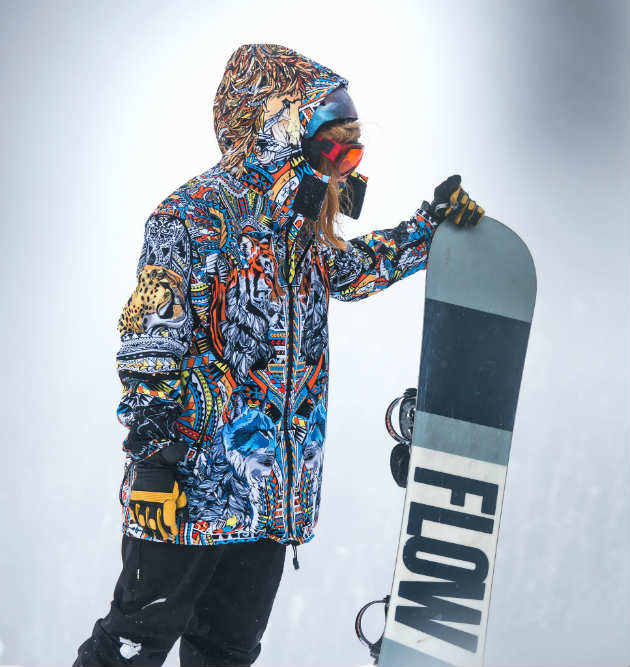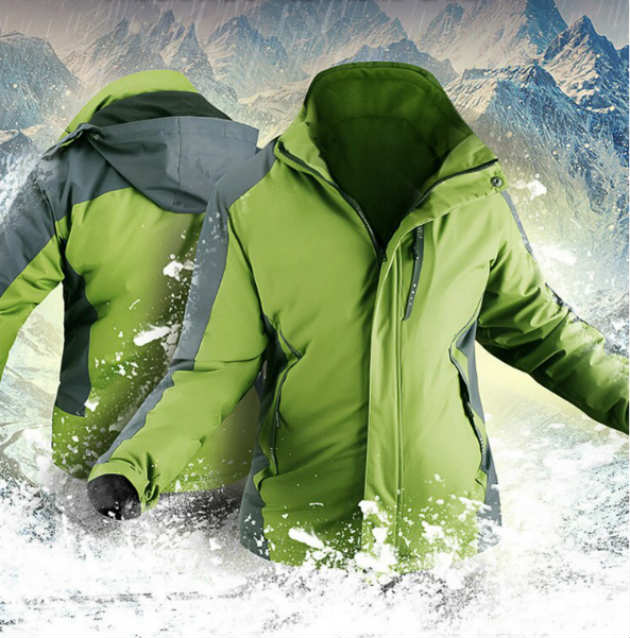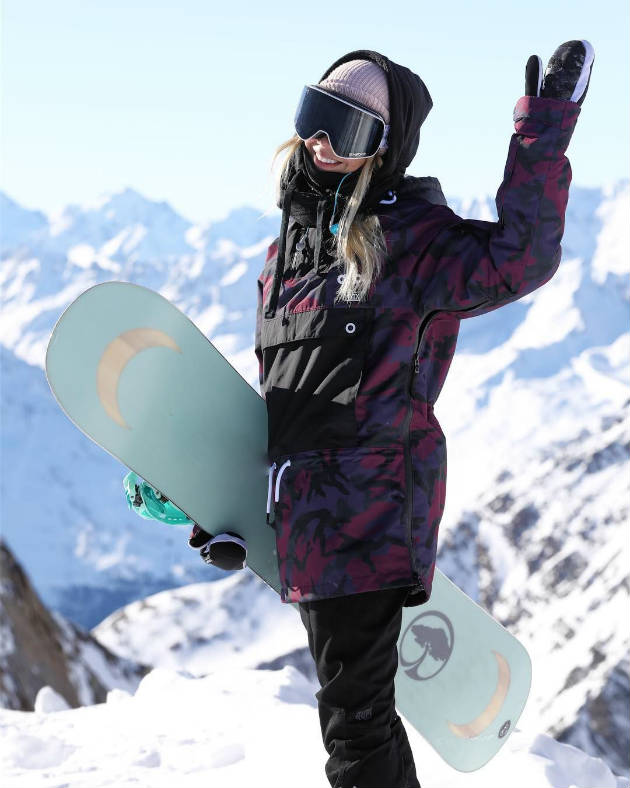Important Factors to Consider When Buying a Snowboard Jacket
When riding down the slopes, your jacket is the first line of defence that keeps your body warm and dry when you fall from your snowboard. If you’ve been renting this jacket until this point, but have decided that investing in one that suits you perfectly is the better choice, there are a number of key aspects you want to pay attention to and that you shouldn’t compromise on in order to ensure you have a pleasant experience up on the mountain. Before you set out on a shopping spree, you should know that although similar, ski and snowboard jackets differ from one another in size and fit.

What is the difference between ski and snowboard jackets?
The fit. Snowboard jackets are much looser than ski jackets and they are also longer. The extra length keeps you warmer when you’re sitting in the snow strapping your board. Ski jackets, on the other hand, are more tight-fitted, because you don’t need to move as much when skiing as you do when snowboarding. However, since both are designed for snow sports, you can probably get away with wearing a snowboarding jacket for skiing and vice versa.
What to Look For in a Snowboard Jacket?
Waterproofness
The first and most important thing to pay attention to when buying a snowboard jacket is waterproofness. Getting wet from a bit of snow and rain will have you cold, shivering and uncomfortable, which will ruin your experience and send you home early. The waterproofness of the jacket is indicated by how the seams are sealed, whether it implements Gore-Tex technology and its waterproof rating. The seams on snow jackets are either critically taped or fully seam sealed. A fully seamed jacket prevents water from getting in completely, whereas critically taped jackets only have their major seams sealed off and some water can still get in.

As far as the waterproof rating goes, you’ll need to pay attention to the number listed on the spec sheet. The waterproof rating of jackets is measured in millimetres, which are usually in the range from 5.000 to 20.000. You want a jacket that has at least a rating of 10.000 millimetres, and you can even consider getting one with 15.000 if you’re going to be riding in heavy rain. And lastly, see whether the jacket you’re considering has Gore-Tex, which is the latest in waterproof and breathable technology for snowboard winter jackets. However, keep in mind that jackets with Gore-Tex aren’t cheap, but they’ll keep you warm and dry even in the most extreme weather conditions.
Breathability
Winter sports are rigorous activities so you’ll naturally sweat quite a bit. With that said, wearing breathable clothing is extremely important when it comes to wicking away the sweat, staying comfortable and keeping yourself warm. If you’re sweating and the sweat gets trapped in your unbreathable clothing, not only are you going to get uncomfortable, but you’ll start to smell when the sweat cools down. Even worse, you’re going to get really cold if you stop riding because you aren’t dry. Breathability is measured similarly to waterproofness, except it’s expressed in grams. You’ll find jackets with anywhere from 3.000 to 20.000g. Although less important than waterproofness, breathability is still important, and you should aim for a jacket that has around an 8.000 to 13.000 rating.

Insulation and Venting
You don’t necessarily need a jacket with insulation, as you may snowboard in warmer weather. Insulation in snow jackets can vary from having none at all to “lining” and anywhere up to 120g with a range of fillers. Unless it’s windy, I personally don’t get too cold on the mountain, so I just wear a jacket with a thin lining. However, if you’re someone who frequently and easily gets cold, a jacket with a decent amount of insulation is something you can consider.
As far as venting goes, there are many snow jacket models that feature vents in some places to help keep you cool if it’s too warm. Some vents come in the form of zips with a mesh lining under the arms. If you need a jacket with vents, make sure they’re easy to use and reach.
How to Wash Snowboard Jacket?
Different types of ski and snowboard jackets are washed differently. You can machine-wash Gore-Tex as described in the wash instructions it comes with. Then hang it to dry, or tumble dry the garment on a gentle, warm cycle. Once dry, tumble dry it again for 20 minutes in order to reactivate the durable water-repellent (DWR) treatment. The warmth is a crucial part of the process, so don’t worry about it. Keep in mind that after several washes, the factory-applied DWR treatment can’t be reactivated anymore, so you’ll have to apply a new treatment as a pump-spray product. On the other hand, jackets with down insulation should be machine-washed with regular cold-water cycle and then run more time without any detergent to make sure the soap is removed. Avoid using fabric softeners, and when it’s time to dry the jacket, use a low heat setting on your dryer and throw in a few clean tennis balls to break up wet clumps of dawn. If you don’t have tennis balls at hand, use a few pairs of balled up winter socks instead.



